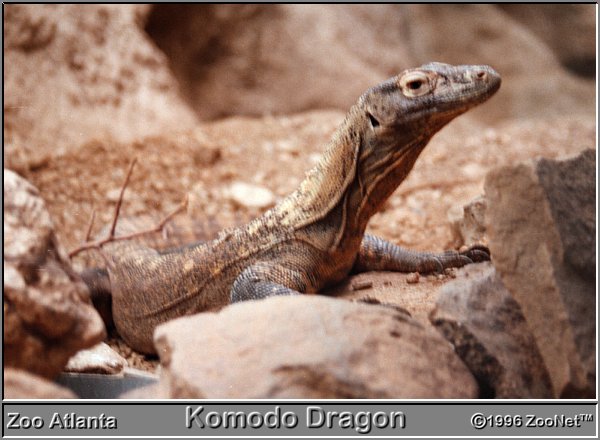
The Komodo Dragon's natural habitat is a small Indonesian
island called Komodo and a few small surrounding islands. They can grow
to be up to 10 feet long and weigh up to 300 pounds. They are carnivores,
and hunt other animals such as deer, wild hogs, goats, rats, and water
buffalo, as well as other Kimodo dragons. They can run very fast in short
bursts and have a poisonous bite. They are in danger from hunting, poisoning,
reduction of food and people moving into their territory. The population
is estimated to be about 4000 to 5000. The problem is that there are only
about 350 fertile females left. The young dragons live in trees and live
off birds and insects until they are about a year old and about 3 feet
long. By then they are better able to defend themselves against other dragons.

The Goliath frog is the worlds largest frog at 1
foot long (doubled when the legs stretch out) and over 7 pounds. They are
found in swiftly flowing rivers in dense rain forests in coastal sections
of Cameroon and Equatorial Guinea in western Africa. Their habitat is being
threatened by people developing the rain forests and putting dams up in
the rivers. They are also heavily sought after by collectors because of
their size (they have been sold for as much as 3000 dollars for an adult).
The adults eat eat insects, crustaceans, fish and amphibians (newts, salamanders,
and smaller frogs, for example), but the tadpoles are strictly vegetarians.
They are also mute, as they have no vocal sacs.
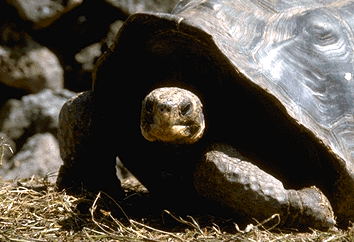
These giant tortoises can weigh as much as 600 pounds
or more and have a shell over 4 feet in diameter. They are found in the
Galapagos Islands, which are located about 650 miles off the coast of Ecuador.
There are a dozen or more species of this tortoise, with different sizes
and shaped shells. They are believed to be the longest lived vertabrate
with a lifespan of 150 years or more. Because of hunting, poisoning, and
human encroachment on their habitats (and the animals that they brought
with them), the population has dwindled from 250,000 in 1835 to about 15,000
today. They are omnivores and can live for months without food or water.
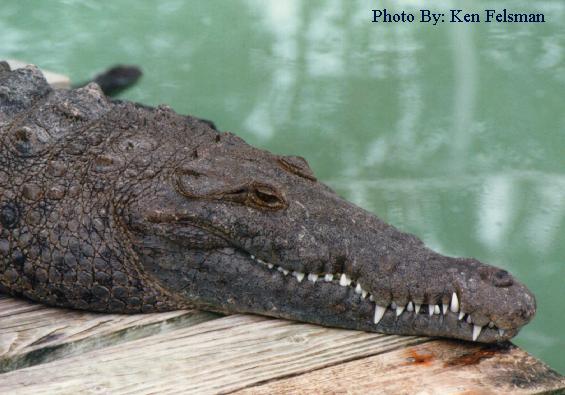
The cause of its endangerment is encrochment on habitant
and illegal hunting. The length is around 12 to 15 feet and the habitant
is fresh and brackish water. The population is around 500 in Florida Bay.
The current range is from Centeral Mexico and the world population is unknown.
They usually feed at night on anything from fish to birds to small mammals.
Crocodiles are very selective of their nesting areas, and these areas are
dwindling at an alarming rate.
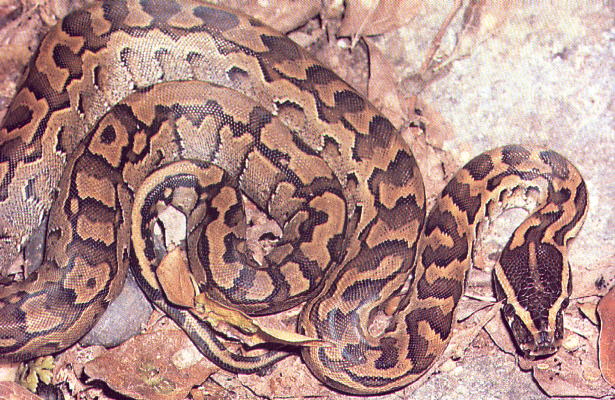
The indian python is one of the worlds largest snakes,
sometimes reaching lengths of more than twenty feet. Pythons prey on birds
and other reptiles, but they prefer small mammals, such as rats. In many
parts of their remaining natural range, pythons keep rodent populations
in check--A valuable roll that is generally unappreciated by the local
human population. They lay as many as 60 eggs at one time, and incubate
them for around 100 days. They are being threatened through loss of habitat
and illegal hunting for their skins, which are in great demand for boots,
belts, purses and such.
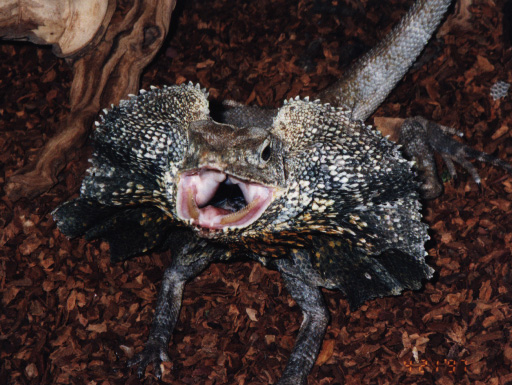
This animal lives in northern parts of Australia. It grows to about 3 foot long and has a large frill of about 8 inches across on its neck. When it feels threatened, it raises up on its hind legs and runs directly at whatever is scaring it, all the while making a strange hissing noise and puffing its frill out. This will actually scare away most predators. They live in the woodlands and like to sit on tree trunks or branches. The females lay their eggs in a hole on the ground, and when the babies are born they have to fend for themselves. They mostly eat insects and spiders.
Birds Mammals Zoo Staff Zoo Outreach Zoo News Zoo History